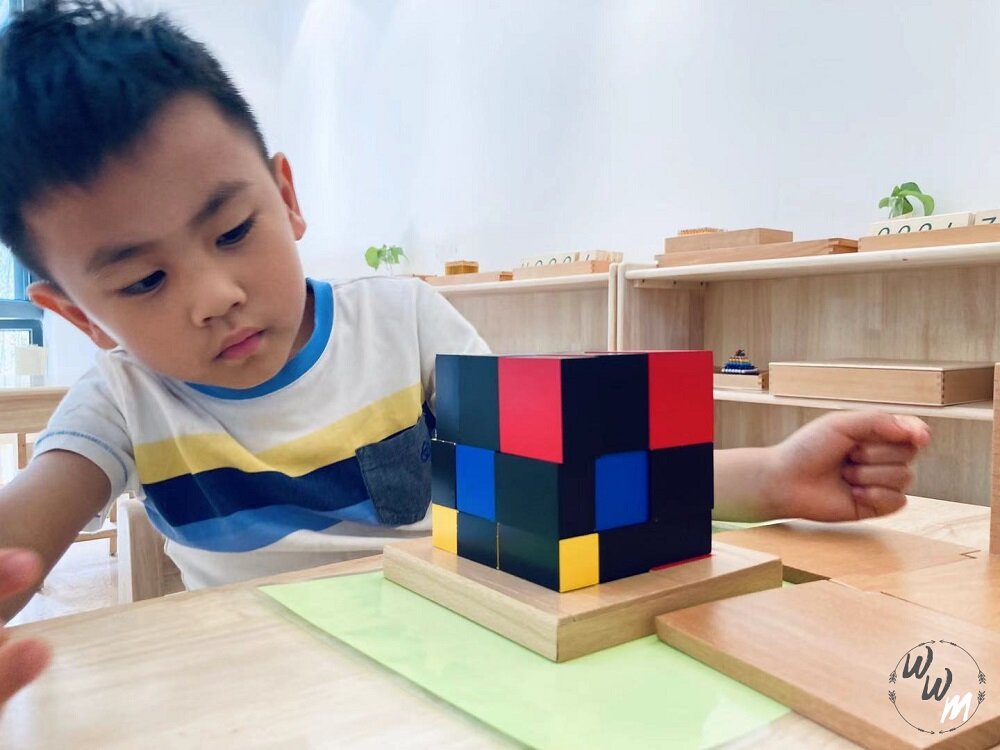Trinomial Cube (presentation one)
What is the Montessori Trinomial Cube
The Trinomial Cube is larger than the Binomial Cube but very similar, the Trinomial Cube differs as it has three layers of cubes, hence the word trinomial. There are 27 different coloured cubes and rectangle prisms in this box.
Trinomial Cube
How the Trinomial Cube is presented
The directress shows the child how to carry the box carefully with two hands to the table mat. She begins by opening the lid of the box and introduces it to the child. She ensures the shallow cubes are at the top, the intermediate cubes are in the middle and the deeper cubes are at the bottom.
The directress starts to remove the cubes from the first layer of the box and places them on their corresponding colour on the lid, starting with the yellow cube. Once the first layer is built, she moves onto the second layer and finally the third layer of the cubes. The directress places a firm hand over each layer making sure they are all the same height. She then begins to place them back into the box by starting with the deepest layer, placing the red cube in the corner, and placing the rest of the cubes around the red cube. She does the same with the rest of the layers and asks the child if he wants a turn to build the Trinomial Cube.
Observing the final product of the Trinomial Cube
What does the child learn by building the Trinomial Cube?
Children learn colour discrimination, this activity prepares the child for mathematics that will be done later on, as well as this activity gives the child a subconscious knowledge about the algebraic formula.
Looking for more Montessori activities?
Here is the full list of the Montessori tasks, including Visual and Muscle Discrimination Sense activities, Tactile Sense activities, Chromatic Sense activities, Auditory Sense activities, Thermic Sense activities, Gustatory Sense activities, Baric Sense activities, Olfactory Sense activities, Stereognostic Sense activities, Geometry activities, and Algebra activities. Just click on the activity you want to learn about to go there.
Visual and Muscle Discrimination Sense activities
Tactile Sense activities
Chromatic Sense activities
Auditory Sense activities
Thermic Sense activities
Baric Sense activities
Olfactory Sense activities
Stereognostic Sense activities
Geometry activities
Algebra activities


